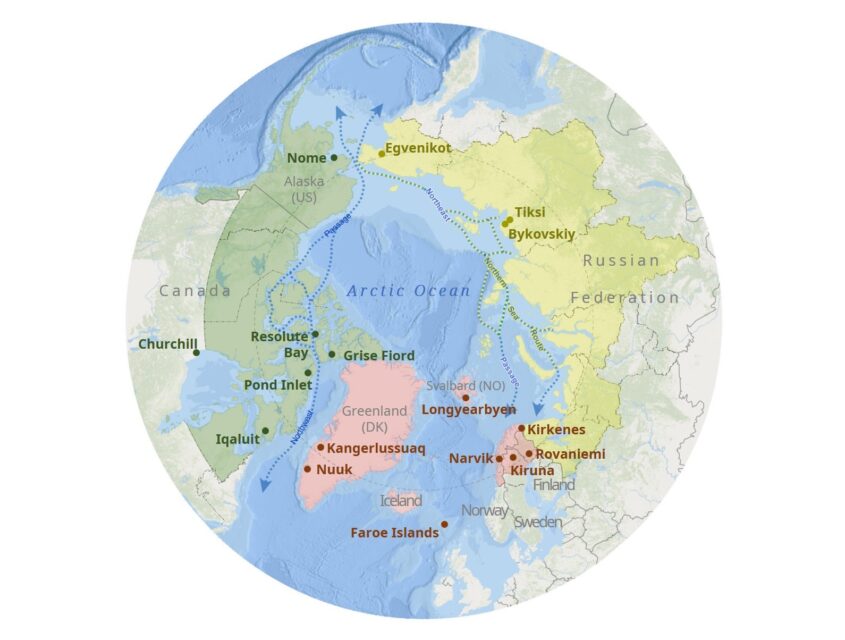Integration Component
InfraNorth’s Integration Component (IC) constitutes a cross-cutting methodological framework for the project and is managed by an interdisciplinary team of geographers and anthropologists. Its aim is to coordinate the research effort on what, when, and how is going to be investigated in the geographically, culturally, historically, and politically diverse Arctic study regions of the project. To do so, the IC sets up the main lines of comparison between field sites in the European and North American Arctic (see map below). In case of the Russian Arctic, we are using data collected before Russia’s invasion of Ukraine. Still, the ambition of the IC continues to be pan-Arctic.
fieldwork
The IC provides methodological assistance for ethnographic fieldwork across a variety of heterogeneous Arctic field sites though a research protocol that combines qualitative and quantitative methods and draws on cross-cutting project activities. It coordinates shared thematic interviews, focus groups, and questionnaire surveys, all of them exploring relationships between transport infrastructures and community well-being. Interviews and focus groups are being interpreted within this broader ethnographic context. Questionnaires are filled out by local residents in situ or online and are being analyzed and interpreted using statistics and Geographical Information Systems (GIS).
Scenario Workshops
The conduct of scenario workshops is an important cross-cutting research activity coordinated by the IC. Local scenarios of possible futures (regarding transport infrastructures) are being developed in collaboration with the research group on Cooperation and Transformative Governance (CAT) at the International Institute of Applied Systems Analysis (IIASA). In 2023, the first local scenario workshops will be implemented with the assistance of local organizations and experts in selected communities. The goal of these workshops is to spark and facilitate discussions about the future role of transport infrastructures for the well-being of these communities, incorporating the ideas and visions of local residents, experts, decision makers, and planners.
Outreach Activities
As we are approaching the second half of the project, the IC is coordinating a variety of activities intended to disseminate the results of the project to a variety of audiences. One of them will be an online media portal displaying project insights and data in an accessible and non-academic format. The output of the IC includes other visual and cartographic representations of quantitative data as well. Charts and maps will be used in internal discussions and scenario workshops, the media portal, and in other electronic and printed outreach products. Of course, scientific publications resulting from research and outreach activities are important products of the IC as well.
